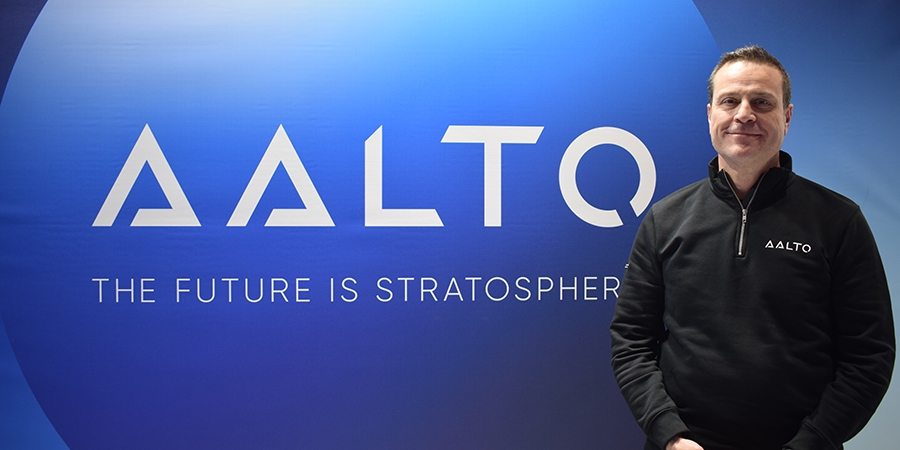Samer Halawi, CEO, AALTO, speaks exclusively to Telecom Review during MWC2023 and shares his vision and insights on his company’s innovative solution Zephyr that works as a ‘flying tower’ that promises to help MNOs scale their offerings in a completely new way.
Please tell us about how you are leveraging the MWC platform to introduce AALTO and its star player Zephyr aircraft?
Our company is a new company. The project has been in existence for a long time and we've been doing this for a number of years. Airbus has built this beautiful plane called Zephyr and in the middle of 2022, Airbus spun off the company to develop a services business. This company now has a name and it’s called AALTO and we launched AALTO at the MWC as a brand to introduce our services business. This is where we are starting to engage with our core customer group which is the mobile operators and the tower companies.
How will Zephyr solutions help MNOs transform their business model? What are the key challenges?
MNOs and tower companies struggle to connect the unconnected as the economic and technical challenges of connecting rural and remote communities are high. Normally, the population densities are not high enough to justify the extension of terrestrial connectivity for the MNOs. With Zephyr, it allows the MNOs to not only manage technical difficulty but also to do it while being profitable, which is extending the coverage to rural and remote areas so that nobody needs to be left behind. As of today, there are about 3.9 billion people in the world who are unconnected. With the capability of Zephyr, acting like a tower in the sky, with the communications payload, it flies in the stratosphere and provides 5G services over 20 kilometers directly to an end user, covering 7500 square kilometers, with very low latency. The solution acts exactly like a terrestrial tower but with the economics that are much superior to terrestrial towers for rural and remote areas. As a result, the MNOs are able to extend their coverage and improve their quality of service. They are able to close all the white spots that they have and meet the universal service obligations and reduce their churn while increasing their subscriber base – all of this while being profitable instead of subsidizing the cost of deploying into rural and remote areas.
Unlike any other HAPS player in the world, we are providing a new way of mobile connectivity. HAPS industry is new in the market as compared to traditional methods including terrestrial tower and satellite communication. We at AALTO have the most mature HAPS program – the only one with an aircraft that has flown in the stratosphere overnight and have done that for 64 days in a row last year.
Share with us the key uses cases that have the potential to be launched commercially and how soon can we expect this?
When you have that sustainability capacity to fly for many days or many months at a time, then you can provide service consistently over a certain location. We have finalized the design of the plane and we are building the services business around it. We're getting the certifications in place and by the end of next year, we will be launching commercial service. That's why we're engaging at MWC with MNOs today because as you would expect, we are producing airplanes and there will be limited supply at the beginning. We want to make sure that the MNOs benefit from the supply as fast as possible.
This is an incredible opportunity to create a new industry. We are we have a team at AALTO that is working really hard. It's very driven with a lot of passion, because the objective is really noble and what is possible is great.
What’s the road ahead for AALTO operating as an independent entity alongside AIRBUS?
Airbus is in the business of producing and selling aircraft and AALTO is developing mobile connectivity and earth observation services business. It uses Zephyr — our star performer – the aircraft displayed here at MWC – that has flown multiple missions. Two of them were in the stratosphere for 14 days and has broken one record after another for unmanned flight 64 days last year. What's so beautiful about this is that this is all green technology. It's sustainable. Its emission is less as the aircraft flies on the power of the sun, charging batteries during the day for night flights. When we offer a service like this that really improves people's lives and saves people's lives, and we are doing so not at the cost of the planet, while respecting the future of the planet. It's completely in line with the United Nations Sustainable Development Goals. Looking ahead, we're going to be launching commercial service by the end of next year. Today, we're engaging with our customers, MNOs in particular, and the tower companies to work with them on where they need to cover unconnected communities to make sure that they're connected and they have the same services that are available in urban areas. Earlier, it used to be difficult to connect those communities because it was either costly or technically difficult, but not anymore. With Zephyr you can have the coverage of 250 towers on the ground at an economics that are completely superior. And that's what we're looking forward to.










